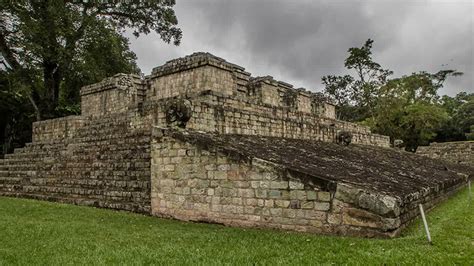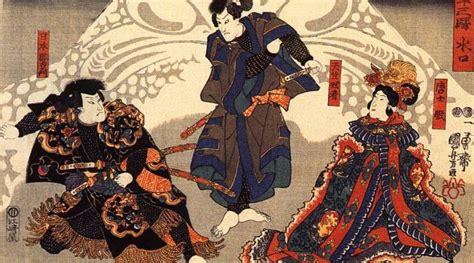Explore Suriname’s history from colonization to modern developments, including the impact of the trans-Atlantic slave trade and Dutch colonial rule. Learn about the independence movement.
Colonization of Suriname
Contents
Colonization of Suriname
Colonization of Suriname
The history of Suriname dates back to the arrival of European colonizers in the 16th century. The Dutch were the first to establish a presence in the area, followed by the English and the French. The colonization of Suriname was driven by the lucrative trade in commodities such as sugar, coffee, and cotton, which required a large labor force. The Dutch West India Company established plantations along the Suriname River, where enslaved Africans were forced to work under harsh conditions.
Despite the difficult terrain and the high mortality rate among European colonists, the Dutch were determined to establish a profitable colony in the region. They relied heavily on enslaved labor to cultivate the land and extract the valuable resources that fueled the economy of the Dutch Republic. The brutal exploitation of African slaves laid the foundation for the social and economic structure of Suriname, with lasting repercussions for generations to come.
The impact of colonization on Suriname was profound, as it brought about a drastic change in the demographic composition of the region. The influx of enslaved Africans, along with the arrival of European settlers and Asian indentured laborers, created a diverse and complex society characterized by ethnic and cultural diversity. The legacy of colonization is still evident in the modern-day population of Suriname, where the descendants of enslaved Africans, indigenous peoples, and immigrants from Europe and Asia continue to coexist.
The colonization of Suriname also had far-reaching consequences for the natural environment, as large tracts of land were cleared for plantations and mining operations. The exploitation of natural resources, coupled with the introduction of non-native species, led to significant ecological changes that continue to impact the biodiversity and ecosystems of Suriname. The environmental legacy of colonization underscores the lasting impact of European expansion and the quest for economic dominance in the New World.
Impact of the Trans-Atlantic Slave Trade
History of Suriname
The Trans-Atlantic Slave Trade had a profound and lasting impact on the history and development of Suriname. This brutal system of human trafficking and forced labor led to the arrival of thousands of enslaved Africans in the colony, who were subjected to unimaginable suffering and hardship.
The impact of the slave trade on the demographics of Suriname was significant, as the enslaved population eventually outnumbered the European colonists. This demographic shift had far-reaching consequences for the social and cultural landscape of the colony, leading to the emergence of a diverse and resilient Afro-Surinamese community.
The economy of Suriname was also deeply affected by the slave trade, as the labor of enslaved Africans was essential for the profitability of the colony’s plantations. The exploitation of enslaved labor fueled the growth of the sugar and coffee industries, leading to economic prosperity for the Dutch colonial masters at the expense of the enslaved population.
The legacy of the Trans-Atlantic Slave Trade continues to shape Suriname’s society and identity to this day, as the descendants of enslaved Africans have worked to preserve their cultural heritage and fight for social justice and equality. The traumatic experience of slavery has left a lasting impact on the collective memory of the Surinamese people, serving as a reminder of the resilience and determination of those who endured this dark chapter in the country’s history.
Dutch Colonial Rule
Dutch Colonial Rule in Suriname began in the 17th century when the Dutch West India Company established control over the region and profited from the exploitation of its natural resources. The Dutch implemented a system of plantation agriculture, primarily focused on sugar and coffee production, which relied heavily on enslaved labor from Africa. This led to the establishment of a brutal slave trade and the widespread practice of slavery in the colony.
Under Dutch rule, Suriname experienced significant social and economic changes as the colony became increasingly dependent on slave labor to sustain its profitable plantations. The Dutch enforced a strict hierarchical class system, with wealthy plantation owners and government officials holding the most power and influence, while the enslaved population faced harsh living and working conditions.
Despite the harsh realities of Dutch colonial rule, the period also saw the development of an influential Creole culture in Suriname, as the enslaved population created their own unique languages, customs, and traditions as a means of preserving their identity and autonomy within the oppressive system of slavery.
The legacy of Dutch colonial rule has had a lasting impact on modern Suriname, as the country continues to grapple with the social and economic consequences of centuries of exploitation and inequality. The history of Dutch colonialism in Suriname serves as a sobering reminder of the enduring effects of imperialism and the resilience of the human spirit in the face of adversity.
Independence Movement
Independence Movement
The independence movement in Suriname began to gain momentum in the mid-20th century, as the country sought to break free from Dutch colonial rule and assert its own sovereignty. The movement was fueled by a desire for self-determination and a rejection of the oppressive practices of the colonial authorities. The people of Suriname were inspired by other nations in the region that had successfully achieved independence, and they were determined to follow suit.
As the independence movement grew in strength, it faced significant challenges and obstacles. The Dutch colonial government was reluctant to relinquish control and resisted the efforts of the Surinamese people to assert their independence. There were also divisions within Suriname itself, with different groups advocating for different approaches to achieving independence. Despite these challenges, the independence movement persevered, and its leaders continued to work towards their goal of a free and sovereign Suriname.
The efforts of the independence movement ultimately paid off, and Suriname achieved independence from the Netherlands on November 25, 1975. This marked a significant turning point in the country’s history, and it was a cause for celebration and national pride. The people of Suriname were finally able to govern themselves and shape their own future, free from the constraints of colonial rule.
The legacy of the independence movement continues to resonate in Suriname today. It remains a source of national pride and a reminder of the importance of perseverance and determination in the face of adversity. The movement’s leaders are remembered and honored for their vision and commitment to the cause of independence, and their contributions continue to inspire future generations of Surinamese people.
Modern Political and Social Developments
Modern Suriname has experienced significant developments in its political and social landscape. The country has transitioned from a period of political instability to a more stable and democratic system of government. The establishment of a multi-party political system has allowed for greater representation and participation in the political process. This has led to increased political engagement and empowerment of diverse groups within the society.
Furthermore, Suriname has made strides in promoting social inclusivity and equality. Efforts have been made to address issues of inequality and discrimination, particularly in relation to indigenous and minority communities. Social welfare programs have been initiated to provide support for vulnerable segments of the population, contributing to the overall improvement of living standards and social well-being.
As part of its modernization efforts, Suriname has also prioritized economic development and infrastructure enhancement. The government has implemented policies aimed at diversifying the economy and attracting foreign investment. This has resulted in the growth of key industries such as mining, agriculture, and tourism, contributing to the country’s overall economic prosperity.
Moreover, Suriname has actively engaged in international partnerships and collaborations, establishing diplomatic relations with various countries and participating in regional and global organizations. This has enabled the country to leverage external resources and expertise, furthering its development objectives and strengthening its position in the international community.
In conclusion, the modern political and social developments in Suriname reflect a period of transformation and progress. Through proactive governance and inclusive policies, the country has embarked on a path towards greater stability, equality, and prosperity, positioning itself as a dynamic and evolving nation in the global arena.












